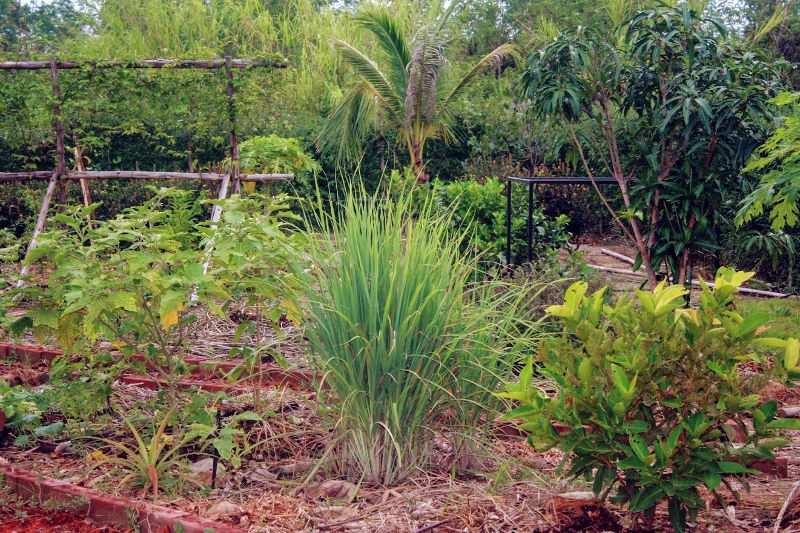The 32 Best Fruit Trees for Warm Climates
Growing fruit is a truly rewarding endeavor. Unless you have acres of land, you will not be able to grow everything. This guide is useful for deciding which trees to plant, and highlights some smaller plants, shrubs and vines to help you get the most from your garden.
The best fruit trees to grow are those that will reliably produce great fruit in your climate. You should understand your own local conditions and observe what other people in your area are growing successfully. You should also consider disease resistance, general hardiness, visual appeal, time to maturity and available space in your garden.
I live in a warm climate. I can’t speak with much authority on pears, apples or stone-fruit, but there are so many varieties of fruit that can be grown in the tropics and sub-tropics that I feel lucky to live where I do.
Mango (Mangifera indica)
It is hard to beat the taste of Mango. There are so many great cultivars to choose from there is really no need to compromise on taste or yield when choosing which mango variety to grow. About half of my trees are mango. By growing a few different cultivars, my mango season is spread out of a longer period of time.
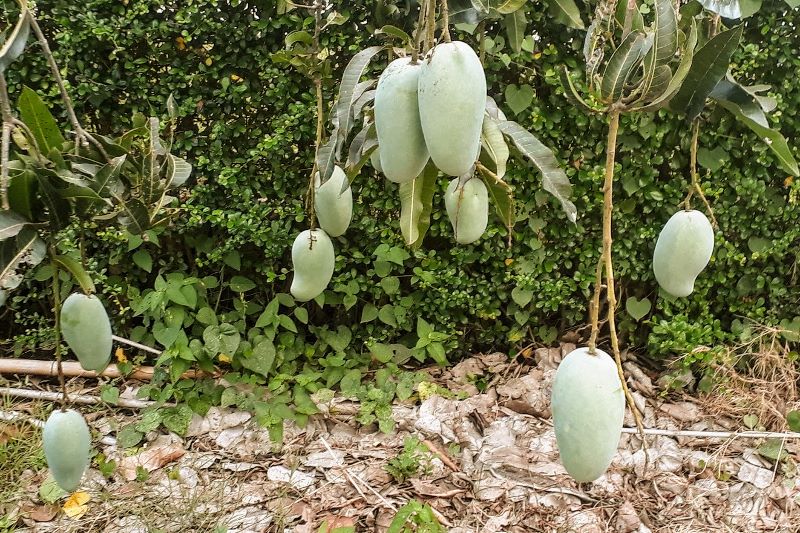
Left unattended, mango trees can grow very large. For the best yield though, you will want to prune your mango each year to keep it productive, disease free and easy to harvest.
See our Mango Growing Guide for a complete run-down on mango cultivation.
The Mango is cemented into my #1 ranking because I have a near ideal growing climate. A lengthy dry winter is great for inducing flowering.
Pineapple (Ananas comosus)
Number 2 in the list, and already we are away from trees. Trees are awesome, but they do take up a lot of room. Regardless of whatever else you may choose to grow there is always room for several pineapple plants.
Incredibly hardy, anybody can grow pineapple, they just need warmth for reliable flowering and good taste. Like all succulents the can go for a very long time without water. They are perfectly happy in the garden when the blistering sun is scorching your weeds.
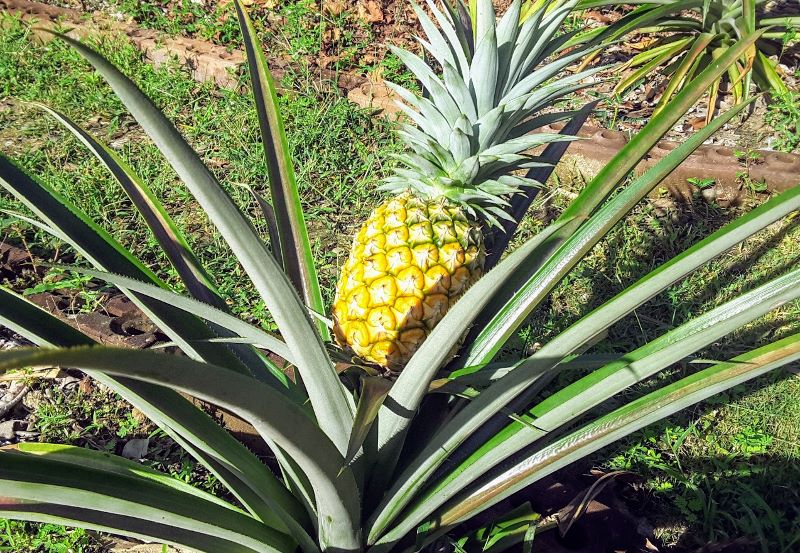
Pineapple is easy to grow, just twist the crown off a homegrown or store-bought pineapple and you have a new viable pineapple plant.
See our Pineapple Growing Guide if you would like to try for yourself!
A wide range of soil types and pH are not a problem for pineapple. In less than ideal conditions, they may take an extra year to flower.
Lime, Lemon or Orange (Citrus hybrids)
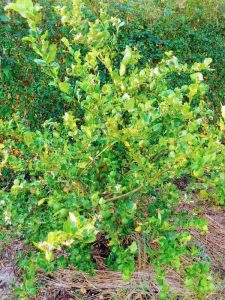
With so many incredible uses in the kitchen, it is just so convenient to have a lime tree in your garden. Limes are mostly inexpensive where I live, but even for me the prices vary seasonally.
When buying a lime (and citrus in general), avoid plants that are flowering in the pot. Citrus will flower when under duress as a built-in genetic survival tactic. What looks like a happy flowering plant at the nursery could actually be on its last legs.
Lime have a shallow root system. Many people recommend not mulching citrus to suppress pathogens attacking the root system. Personally I do mulch for the many general benefits of mulching, and I believe that well-draining soil is more important to the long-term health of a citrus tree than whether you choose to mulch.
Jackfruit (Artocarpus heterophyllus)
The great taste of jackfruit is the foremost reason for ranking highly. It is also a very large fruit, and the tree is low-maintenance and aesthetically pleasing.
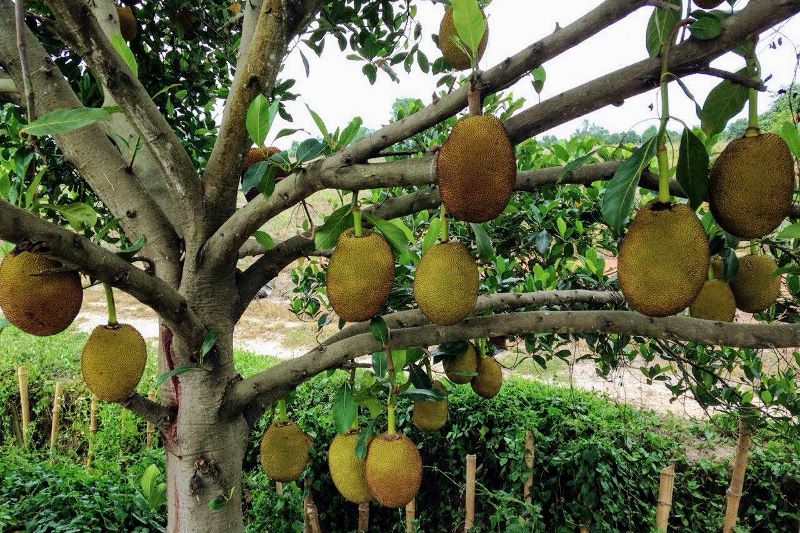
Jackfruit can be eaten fresh or frozen. Unripe fruit can be used as a savory cooking ingredient in various regional cuisines.
In recent years, jackfruit has become popular as a meat substitute (pulled ‘pork’, burgers etc.)
Papaya (Carica papaya)
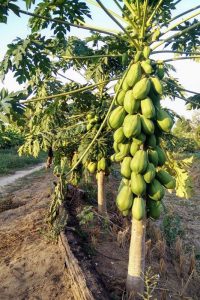
Papaya are almost no effort to grow. The trees will be productive for 2 or 3 years, so it is best to plant one every few months.
If you have a good number of trees growing you can be quite aggressive in culling older trees or young trees that are slow to start producing.
The trunk of a papaya tree is quite soft – you can sever the trunk of a two year old papaya tree with a single swing of a machete. I cut the trunks into lengths and use as coarse mulch. Even quite a thick trunk will completely decompose in under 6 months.
You do need to learn the difference between the flowers of the 3 sexes. If you have a male tree just cut it down and reclaim the space. Papaya are self-reproducing, male trees produce no fruit of their own and play no role in the production of fruit on the other trees.
Java Rose Apple (Syzygium samarangense)
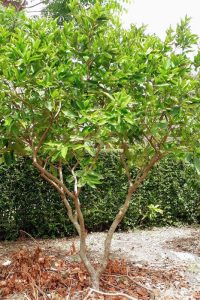
This tree is commonly known as Rose Apple, along with several Syzygium species. The common names Java Apple and Wax apple are more specific to this species.
The fruit has a light sweetness. Coming in a variety of colors, the purple and red fruit tend to have a more intense flavor than the white or green varieties.
A Java Rose Apple tree can grow to 40 feet (12 meters) in height. Fortunately, it is fast growing and easy to prune, so you can shape your tree to fit your garden.
Pomelo (Citrus maxima)
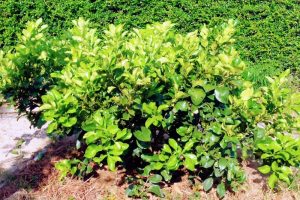
The pomelo is the largest of the citrus fruits, and one of the three original species with the citrus genus (the other two are the mandarine and the citron).
The pomelo has a light sweet taste. A genetic antecedent of the modern grapefruit, the pomelo does not have the bitterness of the grapefruit despite looking quite similar.
Custard Apple / Soursop (Annona, various species)
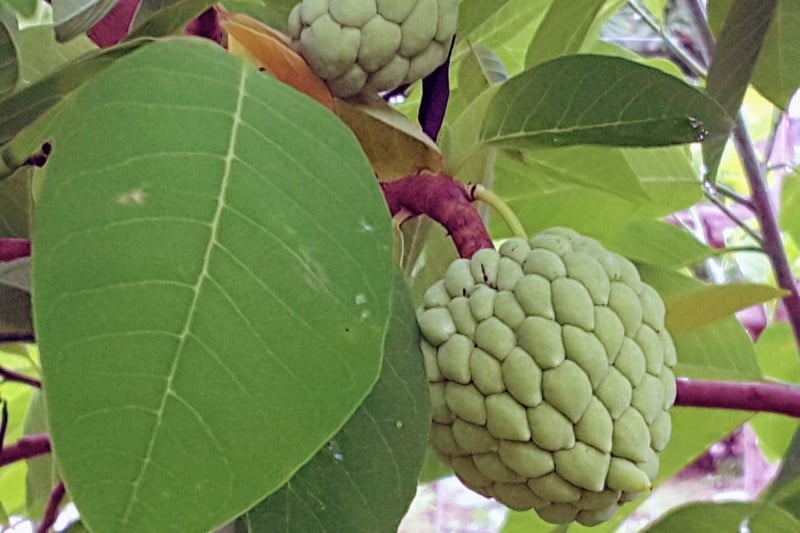
The Custard Apple / Soursop / Sweetsop, Sugar Apple are common names applied to several species within the Annona genus.
They taste so good, you will need to race the birds to harvest!
Banana (Musa, various species)
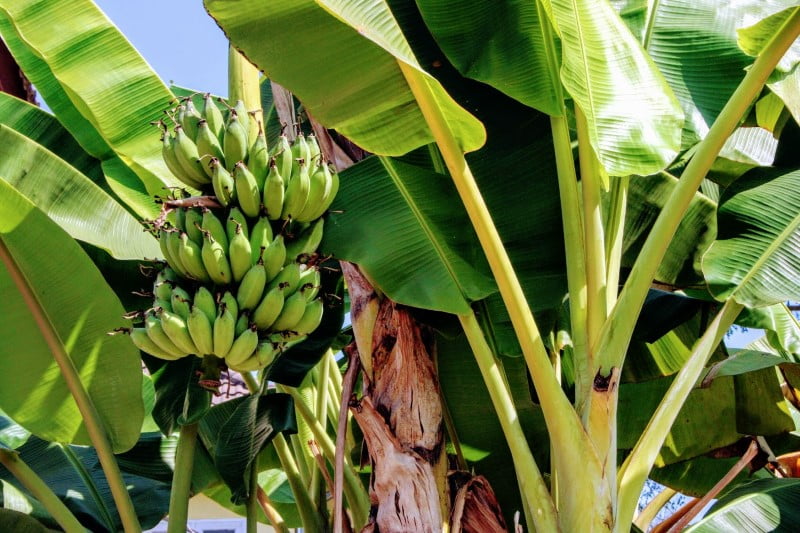
One of the easiest fruits to grow, a banana plant will produce plenty of food for you as long as you provide the water and mulch.
See our Banana Growing Guide to learn more.
Rambutan (Nephelium lappaceum)
Lychee (Litchi chinensis)
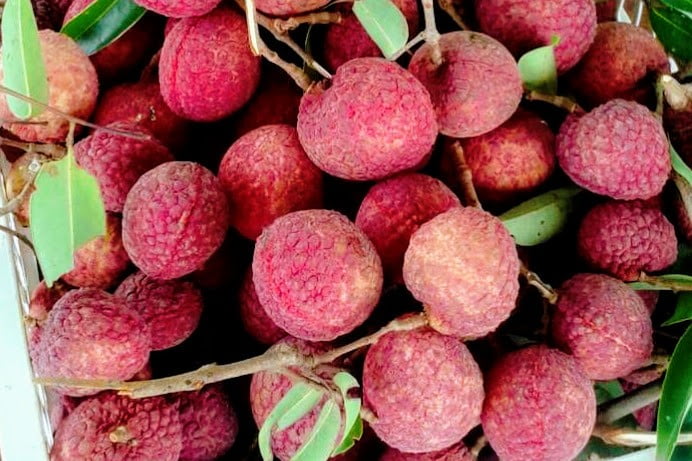
Lychee is a delightful red fruit – easily peeled to reveal the juicy sweet pulp.
You will need a dry sub-tropical winter for best results. Check out our Lychee Growing Guide for details.
Carambola / Star Fruit (Averrhoa carambola)
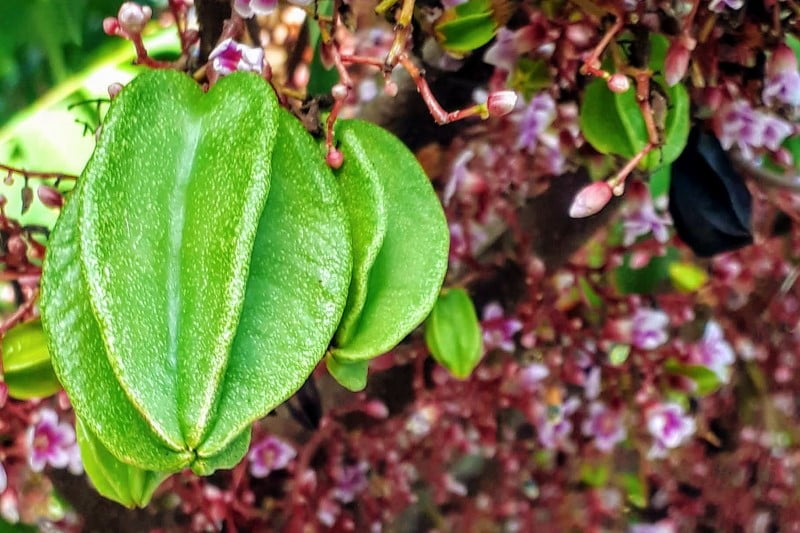
The Star Fruit (also known as Carambola), has a distinctive taste with usually at least some sourness.
Unless you have one of the sweeter fruits, most people will prefer to eat with other fruit or as a salad component.
Star Fruit does contain a toxin, caramboxin. This is usually filtered by the kidneys in healthy individuals but can be a serious problem for people with an underlying renal issue.
Cainito / Star Apple (Chrysophyllum cainito)
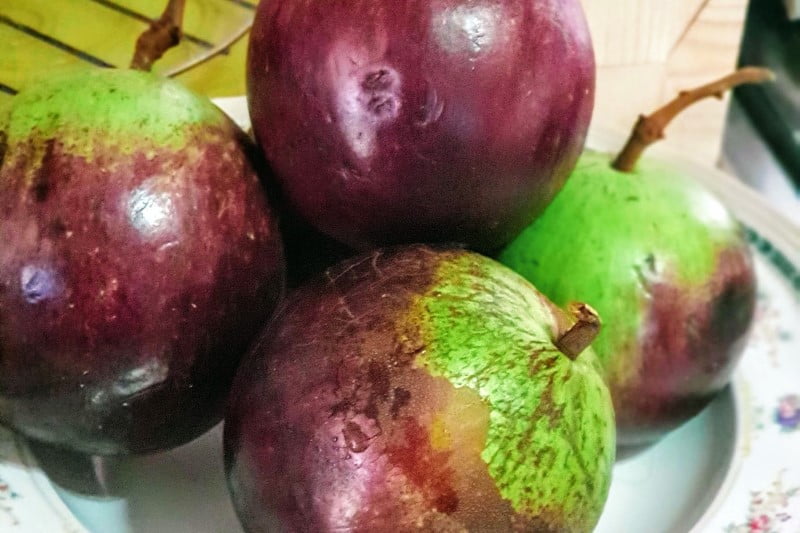
The Cainito or Star Apple is an attractive evergreen tree. The leaves have a distinctive golden brown coloring on their underside
The fruit is plentiful on a mature tree and is a white pulp around a visually striking purple star shape,
Santol (Sandoricum koetjape)
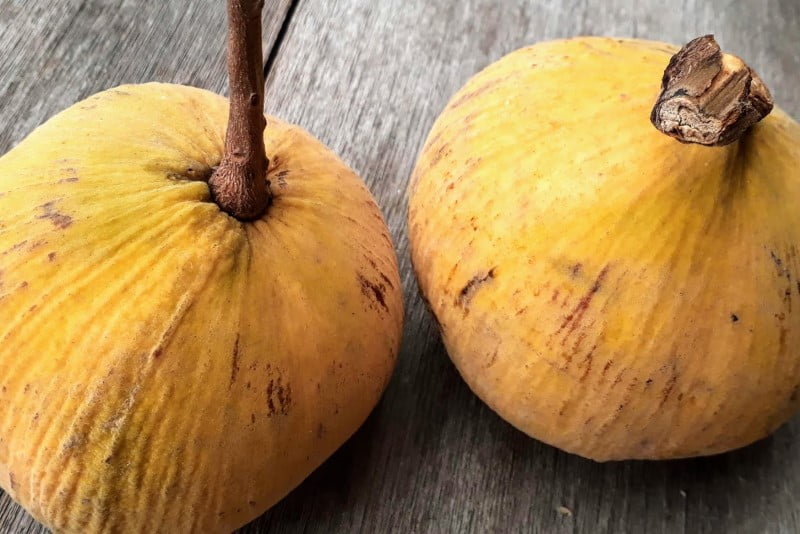
Santol trees are fast-growing and large. They can produce thousands of fruit in a single season.
The fruit is quite sour, but not unpleasant. The large seeds within the fruit are dangerous if swallowed
Passionfruit (Passiflora edulis)
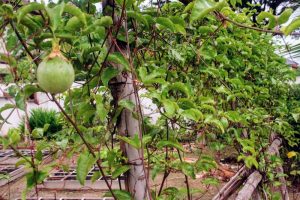
Loved around the world for its taste, passionfruit is a vine, and yields the most fruit when trellised.
The productive lifespan of this perennial is limited. Commercially they are replaced after three annual seasons, with the middle year usually providing the best harvest.
Marian Plum (Bouea macrophylla)
Marian Plum is not a mango, but is often called a Plum Mango and the fruit looks like small mangoes.
Coconut (Cocos nucifera)
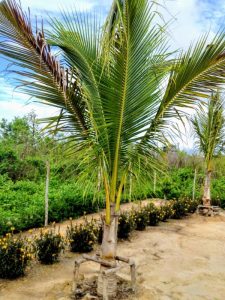
Coconut is popular the world over for its utility both as a food and other uses. It is also has a strong ‘tropical paradise’ association for many people, and as such can really enhance the atmosphere of a garden.
Sapodilla (Manilkara zapota)
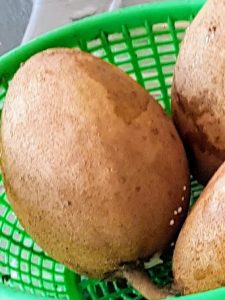
Sapodilla is indigenius to Central America. The tree is an aesthetic inverted-pyramid shape.
The fruit is a brown/orange color and tastes like brown sugar.
Guava (Psidium guajava)
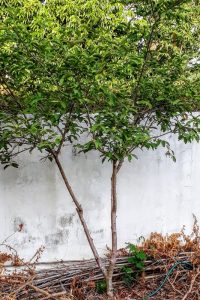
Guava is a great fruit. Fruit Fly can be a serious challenge unfortunately.
Pomegranate (Punica granatum)
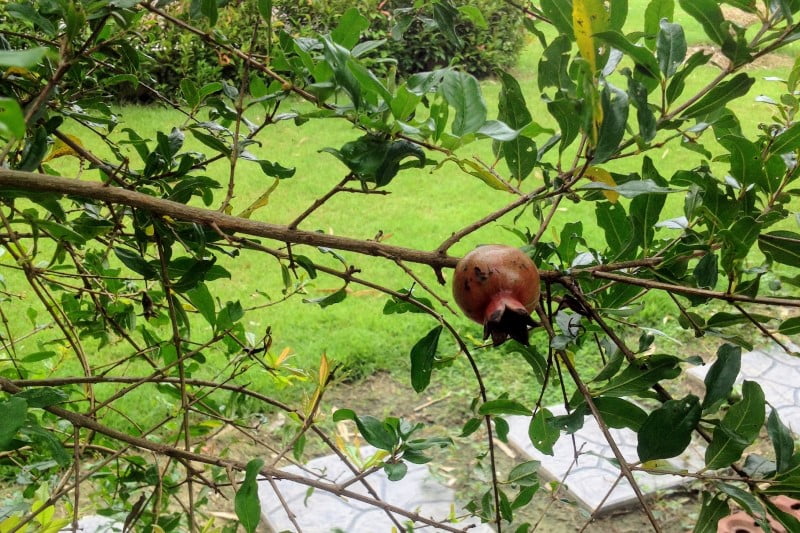
Pomegranate is a straggly looking tree, and with a limited yield it will never feed the masses.
Of course, the pomegranate fruit is a true thing of beauty. It has been suggested that the original forbidden fruit was a pomegranate. (rather than the apple per Western Europe’s version of Adam and Eve’s Temptation)
Kumquat (Citrus japonica)
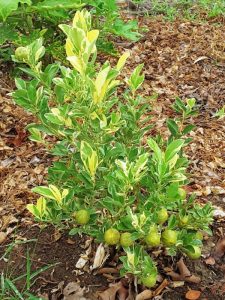
Kumquat are less popular than other citrus, but can be good to eat. The cultivars with oval-shaped fruit tend to be sweeter in taste.
One of the best features of kumquat plants is their compact size, which us great fitting in and around your other fruit trees.
One problem i see commonly is kumquat plants with stunted growth from sitting in a small pot too long. It is better to get the plants into the ground before too long, then prune to size or allow them unrestricted growth.
Avocado (Persea americana)
Ok, I do have a small avocado tree now, but I will wait to see how it fares before touting my success. I did not grow this earlier because we live in a flat, flood-prone area with poor drainage. Avocado trees die very easily if left to stand in water – even for a few hours.
I have my avocado planted in a small mound of soil, and as my soil quality has improved over the years drainage is now significantly better. We also have less flooding now due to som landscaping on a neighboring plot of land, so this may just work!
Langsat (Lansium parasiticum)
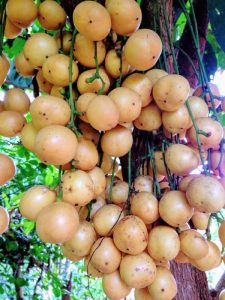
Langsat has a light sweet taste, although it can be somewhat bitter at times. The seeds can be a little difficult to separate from the fruit pulp, by the skin is quite easy to remove.
The common name for this where I live is Longon. I don’t think this name is widely used elsewhere, and it does cause some confusion with Longan which is a completely different fruit that just happens to be similar in size and shape.
Dragonfruit (Hylocereus, various species)
Dragonfruit is a cactus plant that would sprawl along the ground naturally. As a fruit crop it is grown on single poles (e.g. concrete pillar covered with chicken wire). You can also grow it up a sunny wall if you have the means to fix it in place.
The fruit is really popular, and the fruit is visually striking with the deep red of the skin and internally dotted evenly with black seeds. The fruit pulp itself is most commonly white in color, with connoisseurs generally expressing preference for the red-colored varieties.
Tamarind (Tamarindus indica)
Tamarind definitely grows well in my area. It is a very large tree however, and I am out of space in the garden for now.
Macadamia (Macadamia, various species)
Macadamia is the only commercially significant food crop native to Australia. It is now grown successfully around the world.
Cashew (Anacardium occidentale)
Ok, so I am a little conflicted about having the cashew tree on my list. The tree produces a large inedible fruit called a cashew apple. The cashew ‘nut’ is a single seed that protrudes from the bottom of a cashew apple.
The inefficiency of cashew as a food crop goes a long way to explaining why it is expensive even in countries with low agricultural input costs.
At least it produces some food – roasting your own cashews and cooking a meal with a limited edition cashew sauce for friends or family would be nice. At the end of the day it definitely beats a purely ornamental tree, and what better ornament than a bunch of cashew apples swaying in the breeze!
Mangosteen (Garcinia mangostana)
Mangosteeen is a great tasting fruit, but it really needs tripical weather to thrive. Commercially, it is grown within 10° of the equator.
Mulberry (Morus, various species)
Mulberry grows well from cuttings and can grow to a tall tree or managed to preferred size. If you live in a warm climate and like berries, then a mulberry tree is a good option.
Acerola / Barbados Cherry (Malpighia emarginata)
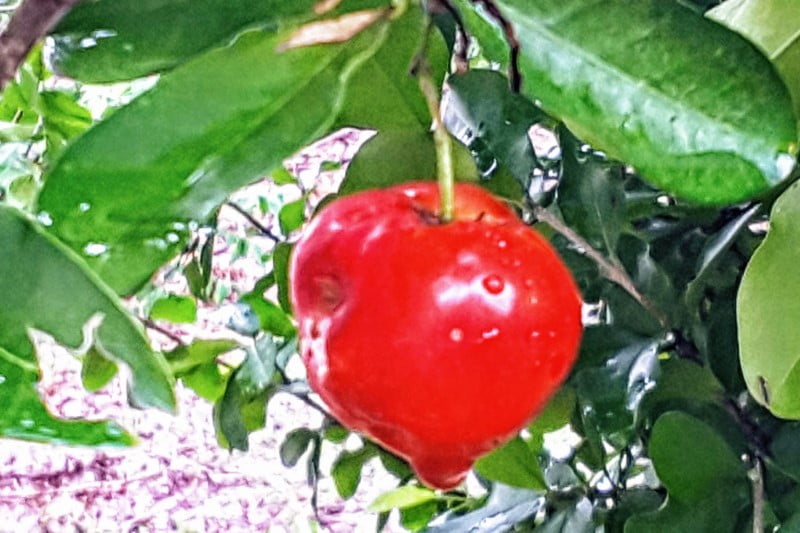
Acerola / Barbados Cherry (Malpighia emarginata) is slightly sour when ripe, but pleasant tasting.
Acerola is high in Vitamin C. Attract birds to your garden with the taste and bright color of Barbados Cherries.
Longan (Dimocarpus longan)
Longan is the most commercially significant food crop where I live in Northern Thailand. The taste is exceptionally good – similar to a lychee but less sweet.
Part of the reason for personally ranking this so low despite the taste is that I see this growing everywhere so it does not seem remotely exotic. The more important reason is that the trees have a thick canopy that prevents anything (even grasses) growing underneath. Longan orchards tend to be dark and muddy at ground level.
Durian (Durio, various species)
Known as the King of Fruits the strong taste of durian certainly has many devotees. On the other hand, the overpowering smell is the bane of hotels and airlines thorughout the tropics. Even fans of durian may prefer not to have them too close to their house.
Growing Fruit in a Warm Climate – Over to You!
If you are living in a warm climate then you really are spoiled for choice with the wide range of fruit you can grow.

